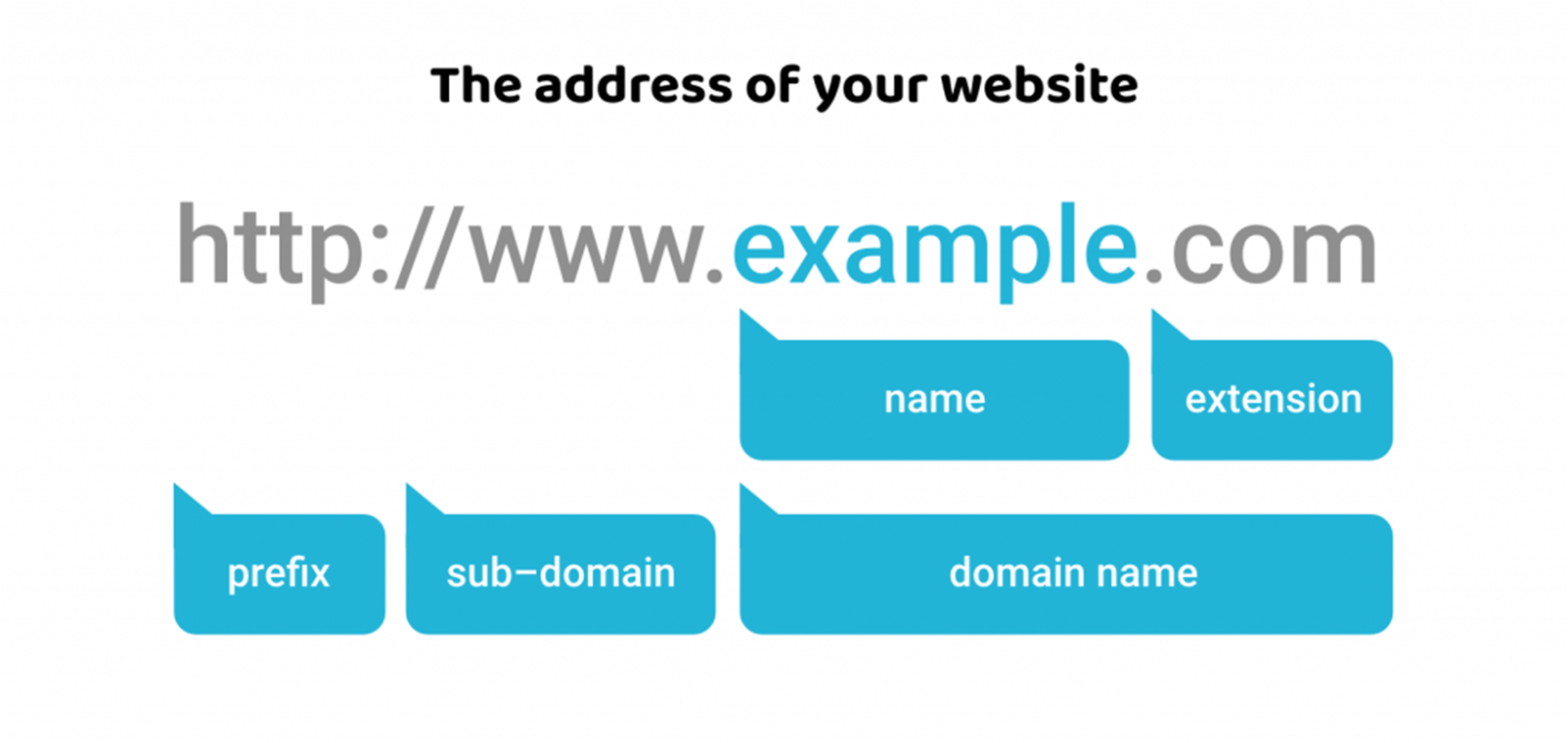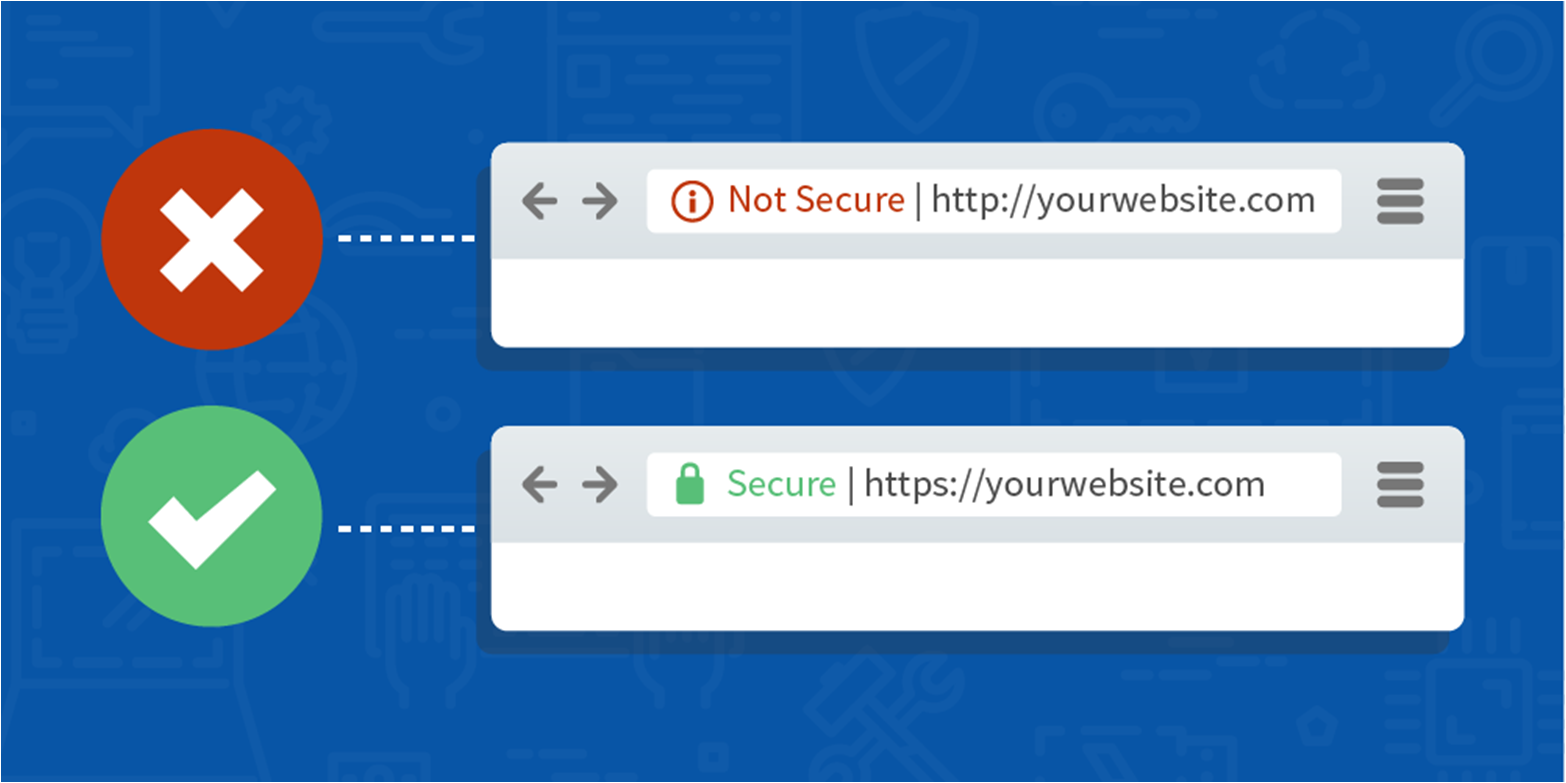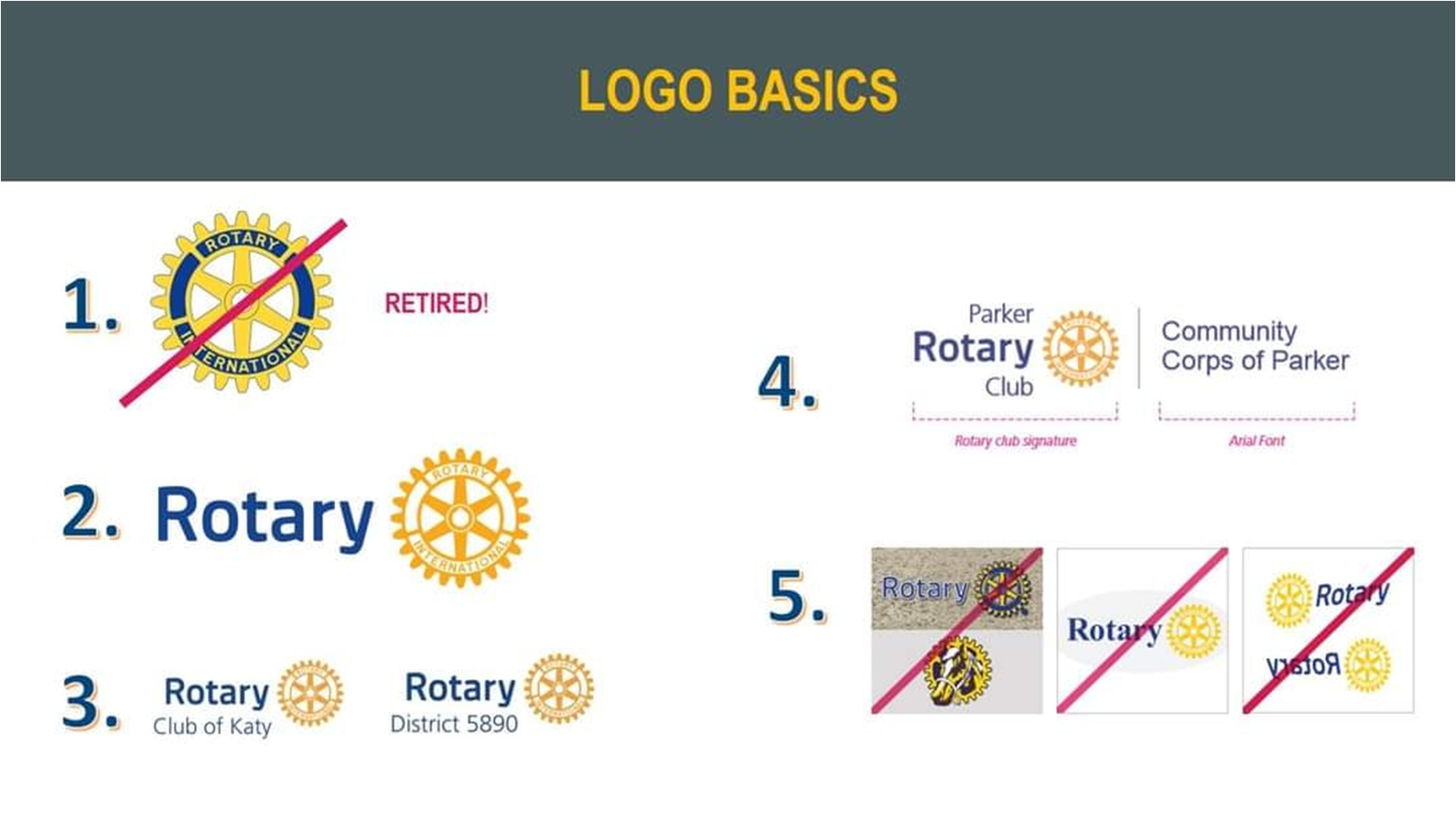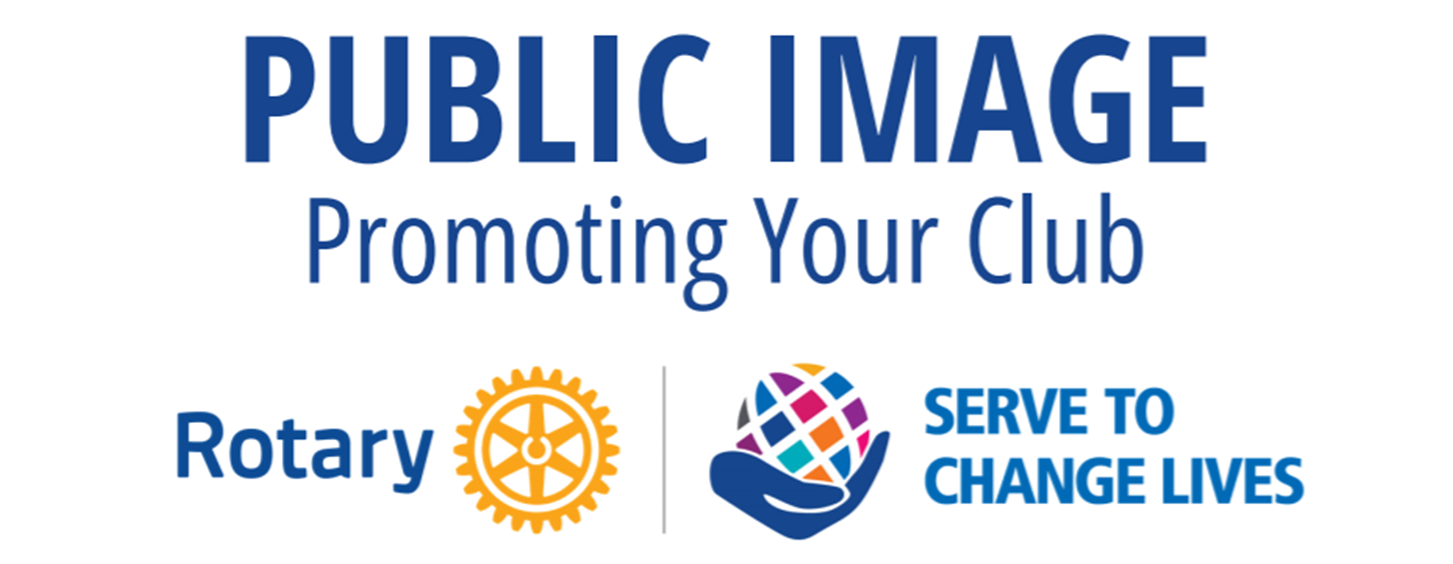
What is Your Club's Online Presence? Does it represent your club members? Does it tell the Rotary story of your club and what it does?
Your District 7030 and Zone 34 Public Image Teams have been looking through club websites and social media accounts and based on what was found, together with feedback from some clubs, here are some suggestions to help your club and some outstanding tips how you can increase your club's public image...
For more than 100 years, Rotary has united leaders who are committed to using their expertise to take action and improve their communities. Awareness of Rotary is high. But public understanding of who we are, what we do, and the value we bring to communities is still concerningly low.
It is important that clubs and members of the Rotary family tell our story in ways that help people everywhere understand what Rotary does, how we are different, and why our work matters.
Without this understanding, we cannot reach our full potential and bring more people together and improve even more communities locally or worldwide.
No other organization is quite like Rotary. By using our unique voice consistently in all our messaging, we can ensure that our communications reflect our distinct character. If we speak, write, and design in one voice, our communications and image will sound, read, and look unmistakably like Rotary. This will give our audiences a better understanding of who we are. Together, we can show the world that we are #PeopleOfAction.

Here’s the tale of the tape...
There are 70+ Rotary clubs in District 7030 (not to mention 40+ Rotaract clubs and 50+ Interact clubs) and while the information below relates primarily to these Rotary clubs, very similar situations exist among Rotaract and Interact clubs as well :
Domain Names

Approximately 50% of clubs in District 7030 have a website. Of those, ~60% are not using domain names (aka website URLs) the proper way. Some do not have a domain name. Some even have multiple domain names. Many are referred to by the ClubRunner portal name such as portal.clubrunner.ca/1234. This lack of a proper domain name inevitably and directly affects your search engine rankings and the ease to find your club on the internet. If your club uses ClubRunner, their support team can help you connect your ClubRunner club portal to a proper domain name such as www.anytownrotaryclub.org. Alternatively, if you are using another website hosting/provider service such as GoDaddy, WordPress, Wix, etc., each usually has the ability to provide you with a customizable domain name at an minimal additional cost.
Concurrently, what is key to remember in setting up your domain name is to ensure three things:
- Your domain name accurately represents you as a Rotary club
- With so many websites already in existence, the first step should be to create a short list of possible preferred domain names for your club's website
- Using this list, you can use a service like GoDaddy to check if any of these preferred domain names are available for you to secure as your own
- Remember that your domain name should explicitly communicate your website as that of a Rotary club...so, the words "rotary" and "club" should always be somewhere in the domain name whenever possible
- Try to make your domain name easy to remember
- You do not want to end up having too long a domain name as the longer the name, the easier it is for persons to get it wrong
- You should also be wary about using abbreviations so as to avoid confusion and errors when persons are searching for your club's website
- Use the correct extension
- Sometimes overlooked, a club's domain name extension is actually very important
- Most of us would be familiar with websites which use a ".com" extension...but, this has a very specific meaning and implication in that it represents "companies"...or more specifically businesses.
- As Rotary clubs are not companies or businesses in so far as the common use and understanding of the term, the better extension for club website domain names to use is ".org" – this represents that your website is for an "organization" (e.g. Rotary.org)
Remember as well when choosing a domain name, it never hurts to get other opinions...so ask your club members, your friends and colleagues to let you know what they think about some possible domain names for your club's website.
ClubRunner

Approximately 40% of Rotary clubs in District 7030 currently use ClubRunner as their preferred club and member management application (there may be more...but they're subscriptions may be temporarily expired or pending renewal).
ClubRunner offers 3 different packages to Rotary clubs: Standard, Lite and Admin Only – with each package offering scaled numbers of available features at various pricing options.
While a club and member management application provides many features and benefits, and is highly recommended for every club in District 7030, it is not an absolute necessity for any club for two reasons: 1) It comes at an additional annual cost to a club, which may or may not be accommodated within a club's administrative budget; and 2) Many (but not all) of the features offered by ClubRunner can be accommodated by other available and often segregate services – some for free and some at a cost depending on your club's specific needs – but without the advantage of having several features under one roof. Additionally, it should be noted that one of the key advantages to a club in District 7030 subscribing to ClubRunner is its becoming part of the connected network of all clubs in the district using ClubRunner, as well as, integrated into the District 7030 ClubRunner.
Within the context of your club's online presence, one of the features offered by ClubRunner is their website design and hosting services which allows a subscribing club to manage and publish a full publicly accessible website integrated into but apart from ClubRunner's core member and club management features which are restricted for use by only members. Together with the ability to adjust website meta tags to improve search engine optimization, as well as, integrated access to website statistics from Google analytics, there are several key advantages to subscribing to ClubRunner and having it serve as your primary club online resource.
Secure Site

Approximately 78% of clubs in District 7030 with a website have a secure site. This means that something called an SSL certificate has been attached to the club's website. One can usually tell if a website if a secure site as it will have “https://” at the beginning of the domain name compared to "http://" – the "s" is what makes the difference!
These days, having a secure website is very important for a couple of reasons. Firstly, if you collect any data from website visitors, you should have one as a preventative measure and deterrent against any type of data breach or theft – particularly with so much malware and ransomware lurking around the internet. Secondly, not having a secure site can hurt your search engine optimization and rankings. All ClubRunner sites have SSL included. If your club uses ClubRunner for its website and it is not secure, there is something wrong and you should contact the ClubRunner support team to help with this. Those clubs with other (non-ClubRunner) website hosting providers should ensure that their sites are secure and talk to the their respective website provider about getting this done if it not active.

Approximately 65% of clubs in District 7030 have an active Facebook Page, while a few clubs have opted for and maintain a Facebook Group, with a further handful of clubs using a Facebook Profile as their sole or primary presence on Facebook.
It should first be noted that in most cases and when dealing with a club's presence on Facebook, a Page is typically the most useful and advantageous option in communicating with the general public and building a brand. While there are numerous pros and cons, limitations and benefits to each type of presence/account on Facebook of which clubs and members should be aware, the basic differences among Pages, Groups and Profiles on Facebook can be found here and more information relevant to clubs about these differences may be found here – so explore your club's options and choose wisely. It should also be noted that while a Page is highly recommended as a club's primary presence on Facebook, having one or more associated/connect Facebook Groups is equally beneficial as it allows for followers to better engage and contribute with your club. For those clubs which want to change their existing Facebook account from group to page, click here, with even more best practices found here. For those club which want to change their existing Facebook account from profile to page, click here.
Of the 65% of clubs with an active Facebook account, more than half post on at least a monthly basis.

About 45% of clubs in District 7030 have an Instagram account, with most choosing the default option of a personal type of account. However, clubs should also know that there is also the option on Instagram to have a business type of account which typically provides a lot more information as far as insights and post performance. For more information on the different types of Instagram accounts available to clubs, as well as, how to switch from one type of account to another, click here. For a more thorough guide on which type of account is right for your club, click here.
Of the 40% of clubs with an active Instagram account, more than half post on at least a monthly basis.

Although not as widely used outside of the U.S, about 25% of clubs in District 7030 have a Twitter account. While there is really only one type of account on Twitter to which a club can subscribe, distinctions can be made among the variety of of profile types of Twitter accounts based on shared content and overall utility of a Twitter account (i.e. why, how and what it is mainly used for by a club). There are various means by which social media specialists categorize the profile types of Twitter accounts yielding several conjugations and labels, but in general, there are four basic profile types that cover the spectrum: 1) Pure Corporate Brand; 2) Corporate Brand With Persona; 3) Individual/Employee With Corporate Brand Association; and, 4) Pure Personal. For more information on these different profile types of Twitter accounts based on content and which is best suited for your club, click here. While a club should maintain a more corporate type to its profile on Twitter, it should also be noted that many organizations also choose to have more than one Twitter account with each following a different profile type and style and thus allowing a single organization to facilitate the advantages of each appropriately. For more information on creating a Twitter account for your club, click here.
Of the 25% of clubs with an active Twitter account, about one-third post on at least a monthly basis.
Social Media Links on Club Website and Vice Versa

Approximately 45% of the clubs with active websites have links to one or more of their social media accounts somewhere on the website. However, some club websites either have links that do not work or are missing links to some of their social media accounts – so be sure to check and ensure that existing links work and that links to all social media accounts are included on your club website. Concurrently, each of a club's social media accounts should in some way refer back to the club's website (provided their is one) – most social media accounts (Facebook, Twitter, Instagram, etc.) typically ask for and publish a website as part of the account profile and it may also be possible to pin a post of your club's website address so that it always appears at the top of your social media account's feed. Both these actions not only validate your club's overall online presence, but, is also one of the best means to direct traffic to each of your club's social media accounts and website as persons viewing one tend to naturally investigate the other. Thus, inclusion of active links to respective social media accounts on a club website, as well as, that of a club website URL on social media accounts is mutually beneficial to the entire spectrum of a club's online presence.
Inactive Social Media Accounts & Websites

Of equal note and regardless of which type of presence/account a club currently uses on social media, how active a social media account and/or a club website is plays is just as significant as is basic existence of either. On occasion and due to a variety of circumstances typically related to improper account management policies, assignments and/or responsibilities, social media accounts and/or websites for a club may not be as active as recommended or needed to really take the basic advantage of things nor serve any sustainable purpose.
Some of the primary objectives of a club's website and/or social media account, whether on Facebook, Instagram or Twitter, are to inform, educate and engage both members and the public on its key elements of a club such as: personnel, stakeholders, events, activities and projects – which in essence define and cultivate the character and culture of a club. As one or all these elements frequently change with additions or updates during each Rotary year, it is only logical (and necessary) that a club's website and social media accounts reflect these changes with regular posts and updates – as such serve up the relevant information to keep followers of a club properly educated and engaged, as well as, serve to inevitably attract even more followers (such as potential sponsors, partners or members).
So when a club's website and/or account on social media is inactive with little to no regular updates or frequent posts (especially over extended periods of time), the value and utility of the website and/or social media account begins to decline with current followers losing interest and tuning out, as well as, potential followers never event paying any attention to start. Unfortunately, many club websites and/or social media accounts fall into this "inactive" category either as "neglected" accounts with very few posts or updates taking place over extended periods or as "orphaned" accounts which are lacking any current owner or manager and have not been updated with any posts or new information in quite a long time.
In such cases, it is thus a club's responsibility to undertake one of two basic courses of action to remedy things: 1) (Re-)Gain the necessary access/administrative rights to a website and/or relevant social media accounts either by contact tracing among those known to have previous access or directly contacting the service provider, and, once access is regained, then set up a proper and sustainable system of management and breathe new life into each account by updating information and scheduling regular posts and publications relevant to the current activities and status of the club; or 2) If regaining administrative access to a club website or social media account is not possible, a club should first attempt to have any of these outdated or irrelevant representations of its brand removed (by contacting the respective service providers), followed by creating new and fresh instances of its online presence by setting up a new website and/or social media accounts with proper and sustainable systems of management and scheduling of updates.
Proper Logos and Graphics

About 72% of clubs in District 7030 have adopted and consistently use the proper logos and graphics as defined by Rotary International's Voice and Visual Identity Guidelines when it comes to brand representation online. This includes proper Rotary Logos as per RI guidelines, as well as, the proper theme for the current Rotary year.
In addition to following RI's updated branding when it comes to club logos, ensuring that a club uses the same brand across all online instances, such as on club websites and/or social media accounts, is key for brand consistency, recognition and association. Many clubs have updated their club logo and related club graphics, ensuring consistent and thorough use of such across all instances, but not all have simultaneously eliminated any and all current and future uses of previous or outdated versions of club logos – the latter is equally demanding and necessary to ensure full brand changeover and adoption.
So check to make sure your club is not only using the correct logo by going to the Rotary Brand Center and using the club logo template, but also that your club updates all instances of its logo online.
Public Image Director/Chair

Until recently, clubs were not really requested (or required) by Rotary International nor District 7030 to report on more than what was considered the five primary positions in a club: president, secretary, treasurer, membership chair and foundation chair. However, as of 2021, similar to those five appointments, club can now report on other key positions such as club public image chair (or director) in My Rotary. Unfortunately, only about 22% of the clubs in District 7030 have done so. While there may be more clubs in District 7030 where the position is in fact assigned and filled, the lack of reporting the public image chair position combined with the absence of any mention of the member or members responsible for that remit on a club's website or other forum, leads to several possible disconnects and shortfalls.
So please ensure that your club not only has a Public Image Chair (and committee) who is up to the task, but also, that all your club's officer, director and chair positions are appropriately reported on My Rotary, as well as, clearly identified on your club website and/or in ClubRunner. Wherever and whenever possible, RI and the District 7030 team and committees would like to send lots of useful information, updates and tips directly to the appropriate club directors/chairs and save a club's president and secretary from having to receive and forward another email.
Check List and Tips

Below is a checklist and some tips that clubs may find useful when it comes to overall improvements to their online presence:
- Try to get your website and all social media resource to have the same name (or as close to the same as possible) – e.g. Rotary Club of Anytown could have the domain name www.rotaryclubanytown.org or www.anytownrotaryclub.org and their Facebook, Twitter, and Instagram accounts are called RotaryClubAnytown or AnytownRotaryClub (note that while abbreviations may sometimes be necessary, they should be used with caution as you would want to avoid either confusing your club's brand with another brand, as well as, creating an almost unrecognizable brand dissociated from your club's name). Proper identification and consistency in such is not only great for branding, but also, for your members and the public to quickly associate, recall and find the various instances of your club's online presence.
- If your club does not have a domain name that properly identifies it or have a domain name properly configured for your website, contact your website provider for help to do so.
- If your website is not a secure site, get help from your website provider to do so.
- Have your club's social media links somewhere either near the top of your website or easy to find so that visitors can easily follow you on social media.
- Make sure you are using authorized Rotary logos and following image guidelines (from the Rotary Brand Center), as well as, the proper/current Rotary International Presidential theme graphic(s), on your website and all social media resources.
- If your club only has a Facebook Group, make sure to either convert it to a Facebook Page or create an associated club Facebook Page so as to better represent your club's brand, as well as, connect with the public.
- Configure your club's Facebook Page tabs to start with Home/About/Posts as this is what you want people to see first.
- Post to your Social Media resources on a daily or weekly basis. More people will follow your club's channels if you provide regular content.
- When you have a club event, list it on your club website and/or calendar, as well as, create a Facebook Event for it.
- Make sure information about your club is current on your club's website and social media accounts – anything which is out of date should be archived or removed.
- Make sure the Social Media links on your club's website work and are up-to-date, as well as, ensure that your club's website is part of each of your club's Social Media profiles.
- All clubs should be using minimum of Facebook and Instagram as Social Media resources. Others to consider are YouTube, LinkedIn, and Tik Tok, particularly if trying to reach a broad audience.
- Whenever something is posted to your club's Social Media accounts, make sure any members that have their own personal social media accounts "Like" and "Share" your clubs posts – this will help with your clubs online branding, reach and exposure.
- Explore and find out if your club may have multiple social media accounts on the same service as this will confuse and hinder your online presence and efforts. If more than one account/profile for your club is found, you should delete the account(s)/profile(s) which is/are not being used anymore – for orphaned accounts, seek assistance from the service provider.
- Tag Rotary District 7030 in all of your club's appropriate social media posts (on Facebook, Instagram, Twitter) so your club's news and events can be further seen by more persons who would like to see your posts.
- Be sure to routinely check our the District 7030 social media channels for updates, information, resources, tips and help, as well as, for content which can be shared/used on your club's own social media accounts.
- Adopt and use a content calendar and feel free to post events, news, milestones, and club anniversaries regularly so that your club is never short on content.
- Reinforce your online presence by sending out press releases to local radio, tv, and print outlets as this is still a great resource to help get the word out and raise awareness – the same news, announcements, events, and milestones, that you would send out on social media, should also be sent to these outlets.
For more information and tips on improving your club's online presence, please feel free to contact the District 7030 Public Image Team.